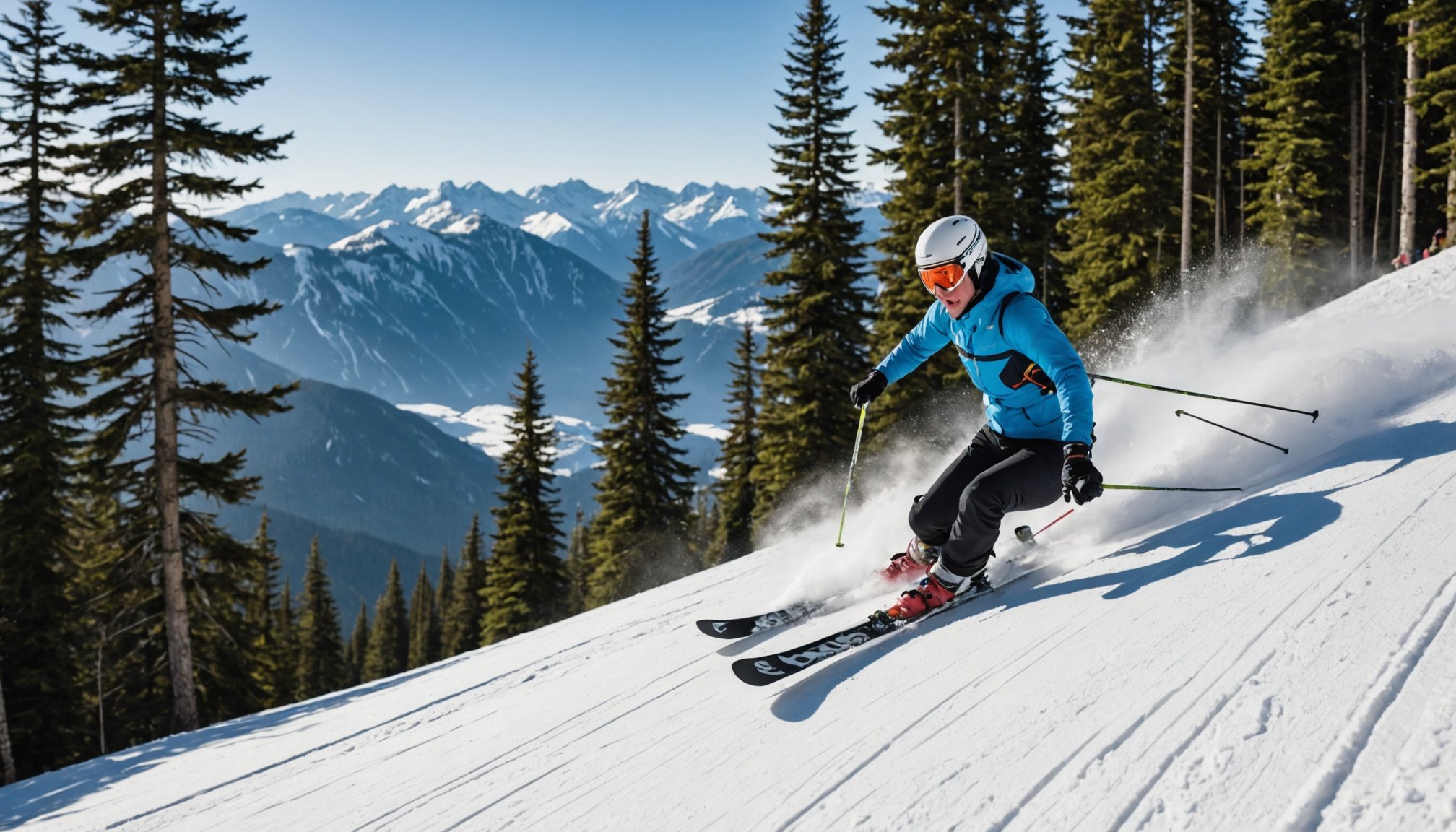Understanding Fear in Skiing
Fear is a potent force in skiing that affects performance, especially during jumps. Recognising the psychological impact of fear is crucial for skiers aiming to improve. Fear can trigger anxiety, leading to compromised technique and increased risk of injury. Identifying common triggers of fear, such as high jumps or unfamiliar terrains, helps in addressing these challenges. Among professional skiers, these triggers may include anticipation of technical errors or fear of falling.
Jump anxiety is prevalent in skiing. It manifests as hesitation, stiffness, or overthinking, affecting fluidity and precision. Fear management is essential to overcoming these barriers and refining skills. Effective fear management can be achieved through psychological preparation and technique refinement. Strategies can include mental rehearsal, setting realistic goals, and using supportive equipment to build confidence gradually.
Also to read : Strengthening mental fortitude: proven psychological strategies for cyclists competing in multi-stage races
Recognising how fear manifests during jumps allows skiers to adjust their focus and concentration. Psychological strategies like visualisation and positive reinforcement can assist in overcoming fear. By understanding these underlying psychological dynamics, skiers can build resilience and improve their performance, embracing challenges as opportunities for growth rather than obstacles.
Mental Strategies for Overcoming Fear
In skiing, mental strategies are paramount to conquering fear. Visualization techniques offer a profound impact on performance. By creating vivid mental imagery of executing perfect jumps, skiers boost confidence and clarity. Esteemed athletes like Lindsey Vonn often engage in this practice, crafting successful mental rehearsals before competitions. Mental imagery strengthens neural pathways associated with technique execution, solidifying precision and poise.
This might interest you : Unlock your hiking adventure: tips, trails, and gear insights
Visualization and Mental Imagery
Before jumps, effective visualization requires more than mere imagination—it involves detailed scenarios. Techniques include ensuring a relaxed state and visualizing every aspect of a jump, from takeoff to landing. Case studies highlight how professional skiers leverage this method, often crediting it for peak performances. Mental imagery contributes profoundly to building not only confidence but also a state of calm readiness.
Cognitive Behavioral Techniques
Challenging ingrained fears requires cognitive restructuring. Skiers can learn to identify and counter negative thoughts tied to jumping. This involves replacing catastrophic visualizations with evidence-based positive outcomes. Real-life success stories of skiers utilising these strategies demonstrate remarkable overcoming of fear, enhancing not only performance but overall skiing enjoyment. Cognitive techniques thus provide robust support for fear management.
Practical Exercises to Build Confidence
Building confidence in skiing, especially for tackling jump anxiety, requires a strategic approach. Incremental exposure drills are instrumental in this process. By designing gradual step-by-step exercises, skiers can comfortably adapt to increased jump height and complexity. This approach minimises fear by progressively acclimating the body and mind to challenges. Regular feedback helps track progress and fosters confidence as tangible improvements are recognised.
Incremental Exposure Drills
The art of designing effective exposure drills lies in a structured, patient approach. Starting with small jumps and increasing difficulty gradually ensures safety and psychological readiness. Feedback, both personal and from coaches, provides insights that enable skiers to fine-tune their techniques and enhance confidence progressively.
Partner Support Exercises
Skiing isn’t a solitary pursuit—peer support plays a crucial role in overcoming fear. Structured sessions with accountability partners enable skiers to receive encouragement and feedback in a supportive environment. Successful partnerships between athletes often illustrate how shared motivation can break barriers and boost confidence.
Visualization in Action
Merging visualization with on-snow practice maximises efficiency and results. By conducting mental rehearsals before physical execution, skiers bridge theory with reality. Tracking improvements and adjusting techniques based on outcomes sharpens their skills, solidifying mental strategies used alongside practical drills.
Insights from Experts
In skiing, the intricate blend of physical skill and mental strength is crucial. Sports psychology offers indispensable insights into managing fear and enhancing performance. Interviews with renowned sports psychologists, specializing in skiing, reveal how psychological strength training is akin to physical conditioning. They emphasize tailored mental strategies, advocating for bespoke approaches for each athlete’s unique needs.
Professional skiers provide valuable advice on overcoming fear, underscoring the significance of psychological resilience. Notably, mental health is not a mere supplement to their physical training but an integral component. They share experiences about how cultivating a robust mental framework aids in managing jump anxiety and fosters peak performance.
Incorporating mental health awareness fundamentally transforms athletic performance. It’s a reminder that optimal skiing extends beyond technique—embracing a holistic mental approach is essential. Professional insights further validate that fostering a strong mental attitude, facilitated by sports psychologists, directly impacts a skier’s success on the slopes.
Expert advice underscores the importance of addressing psychological barriers early in training, ensuring that fear doesn’t compromise potential. By investing in mental preparation, skiers can anticipate challenges, turning fear from an obstacle into a catalyst for growth and elite performance.
Real-Life Success Stories
Real-life success stories highlight how skiers have navigated the complexities of fear management, especially in conquering jump anxiety. These narratives provide insightful examples of how effective skiing psychology can lead to meaningful breakthroughs.
Case Study: A Professional Skier’s Journey
One compelling story involves a renowned professional skier confronting significant jump anxiety. Through targeted cognitive restructuring, this athlete redefined their relationship with fear, adopting mental strategies that focused on replacing negative thoughts with confident, evidence-based visualisations. This shift was pivotal in achieving new heights in their career.
Group Testimonials
Skiers often find strength in shared experiences. Numerous athletes have reported that partner support exercises played a critical role in overcoming fear. Working alongside peers in structured practice sessions fostered an environment of mutual encouragement, where overcoming jump anxiety became a collective triumph rather than a solo struggle.
Lessons Learned from Failures
Failures, too, contribute valuable lessons. Analyzing unsuccessful jumps reveals the foundations of resilience. These moments teach skiers the importance of gradual exposure and practice, honing their skills through trial and error. The insights gained from each experience strengthen their resolve to persist, ultimately transforming fear into fearless performance on the slopes.











